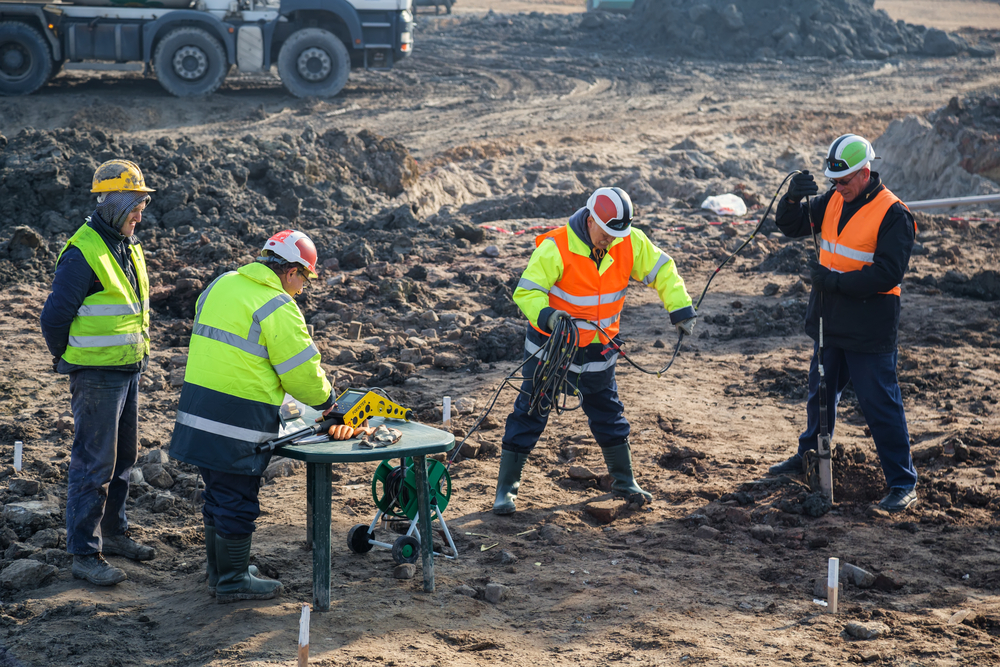Secret Abilities Every Geo Tech Engineer Demands for Reliable Website Evaluation
Secret Abilities Every Geo Tech Engineer Demands for Reliable Website Evaluation
Blog Article
The Interdisciplinary Approaches in the Geotechnical Sector: Linking the Void In Between Engineering, Geology, and Environmental Science for Optimum Job Outcomes
The assimilation of engineering, geology, and environmental scientific research within the geotechnical sector is not merely beneficial; it is essential for accomplishing optimum task end results. What techniques might emerge to promote this vital collaboration and improve the effectiveness of geotechnical techniques?
Relevance of Interdisciplinary Partnership
The relevance of interdisciplinary collaboration in the geotechnical sector can not be overemphasized. Effective geotechnical jobs require the assimilation of varied proficiency from various fields, including design, geology, and ecological scientific research. This cooperation makes certain that all facets of a task are taken into consideration, bring about thorough options that resolve complicated obstacles.
When functioning in isolation,Interdisciplinary collaboration promotes development by enabling specialists to share insights and methodologies that may not be noticeable. By leveraging the staminas of several disciplines, groups can identify potential threats, enhance design procedures, and enhance the sustainability of geotechnical tasks. Such partnership promotes an alternative understanding of site-specific conditions, which is crucial for exact assessment and decision-making.
The complexity of geotechnical jobs requires a worked with strategy to analytic. When engineers, geologists, and environmental scientists interact, they can create a natural approach that aligns technical needs with ecological considerations and regulative conformity. This harmony not just improves project results however additionally adds to the long-term durability of facilities. Inevitably, interdisciplinary cooperation is crucial for advancing ideal practices and achieving quality in the geotechnical industry.
Trick Roles of Each Discipline
Collaboration among various disciplines is not just advantageous; it is important for the successful execution of geotechnical tasks. Each technique-- design, geology, and ecological science-- plays an unique yet interconnected function that adds to project effectiveness and sustainability.
Geotechnical designers are mostly in charge of developing foundations and guaranteeing architectural stability. They examine soil and rock homes to examine load-bearing abilities, supplying vital information for safe building techniques. Their experience allows the solution of cutting-edge options to complicated challenges.

Environmental scientists analyze the possible effects of building on environments and water resources. They conduct ecological analyses and develop mitigation techniques to decrease damaging effects. By incorporating eco-friendly considerations, they make certain conformity with policies and promote sustainability throughout the task lifecycle.
Study of Successful Combination
Successful assimilation of geotechnical disciplines can be exhibited via various case researches that highlight the effectiveness of synergy in attending to complex design challenges. One remarkable example is the building and construction of the Hong Kong-- Zhuhai-- Macau Bridge, where a collective approach entailing geotechnical engineering, geology, and ecological science was essential. Engineers and geologists functioned in unison to examine the seabed conditions and maximize the foundation design, ensuring security and minimizing ecological impact.
An additional impactful case is the improvement of slope stability in the San Francisco Bay Area, where an interdisciplinary group incorporated geotechnical analysis with ecological assessments. By incorporating geological studies and hydrological studies, the group successfully determined prospective landslide threats and executed efficient reduction actions, enhancing safety and sustainability.
Moreover, the redevelopment of Brownfield websites usually requires a multidisciplinary approach. In one situation in Chicago, cooperation among geotechnical engineers, environmental researchers, and city organizers resulted in the successful remediation of infected soil, permitting the consulting engineer safe change of the website right into an area park. These study illustrate that interdisciplinary collaboration not just addresses technical obstacles however likewise fosters innovative services that benefit both projects and communities.
Obstacles in Multidisciplinary Projects

Furthermore, collaborating schedules and operations among numerous groups can be problematic, specifically when each self-control has unique task turning points and deliverables. This misalignment can cause delays and enhanced prices. The difficulty of resource allotment also looms large; guaranteeing that specialized know-how is readily available at crucial points requires mindful planning and insight.
Last but not least, governing conformity presents one more significant challenge. Each technique might deal with different regulatory frameworks, and aligning these needs to satisfy project purposes can be complex and taxing. Attending to these challenges requires solid leadership and efficient interaction strategies to promote cooperation and ensure that multidisciplinary teams function cohesively in the direction of shared goals.
Future Trends in Geotechnical Practices
As the geotechnical market progresses, arising trends are reshaping methods to resolve the difficulties encountered in multidisciplinary projects - geo tech engineer. One substantial trend is the enhanced combination of advanced innovations, such as expert system and equipment learning, right into geotechnical analysis and design. These modern technologies enhance predictive modeling and threat analysis, allowing designers to make more informed choices throughout the job lifecycle

Moreover, the adoption of digital doubles and real-time monitoring systems is becoming a lot more widespread. These tools help with ongoing evaluation of dirt problems and structural performance, enabling for timely treatments when concerns occur.
Verdict
Finally, the assimilation of engineering, geology, and ecological scientific research is essential for accomplishing ideal end results in the geotechnical market. Interdisciplinary collaboration fosters advancement, improves problem-solving capabilities, and lines up technical requirements with ecological sustainability. Effective situation studies show the advantages of this technique, while recognizing the obstacles faced in multidisciplinary jobs. Looking ahead, welcoming these collaborative methods will certainly be important for browsing future patterns and advancing the field of geotechnical engineering.
The combination of engineering, geology, and ecological science within the geotechnical market is not simply helpful; it is critical for accomplishing optimum task outcomes. Efficient geotechnical projects need the combination of diverse knowledge from numerous fields, consisting of engineering, geology, and ecological scientific research.Navigating the intricacies of multidisciplinary projects in the geotechnical sector presents a number of significant difficulties.As the geotechnical sector develops, arising trends are improving practices to deal with the obstacles faced in multidisciplinary tasks. Geotechnical engineers are progressively working together with environmental scientists to ensure that projects line up with sustainability goals and abide with regulatory requirements.
Report this page